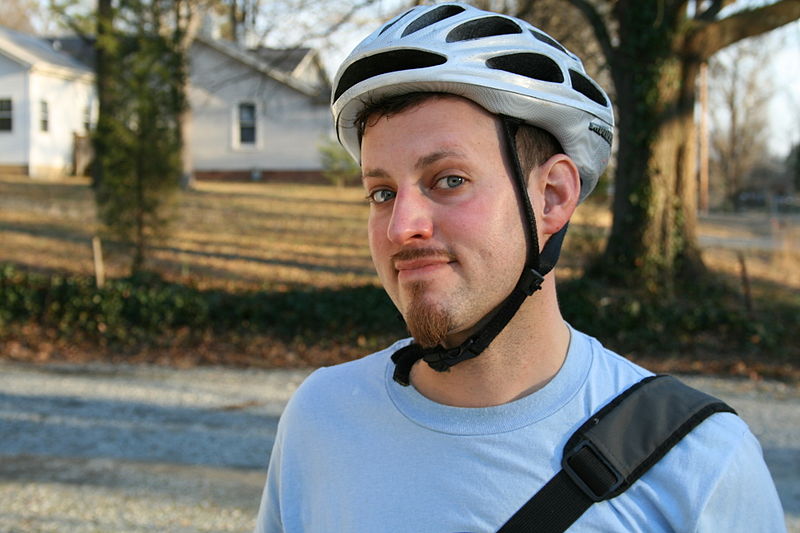 (not me)
(not me)
At age 46, a few weeks after leaving the service, T.E. Lawrence was fatally injured in a
motorcycle accident on a
Brough Superior SS100 in
Dorset, close to his cottage,
Clouds Hill, near
Wareham. A dip in the road obstructed his view of two boys on their bicycles; he swerved to avoid them, lost control and was thrown over the handlebars of his motorcycle. He died six days later. The spot is marked by a small memorial at the side of the road. The circumstances of Lawrence's death had far reaching consequences. One of the doctors attending him was the
neurosurgeon Hugh Cairns. He was profoundly affected by the incident and consequently began a long study of what he saw as the unnecessary loss of life by motorcycle dispatch riders through head injuries and his research led to the use of
crash helmets by both military and civilian motorcyclists. As a consequence of treating Lawrence, Sir Hugh Cairns would ultimately save the lives of many motorcyclists.
[12]
Reading the new Malcolm Gladwell article made me realize that I have no idea who this Lawrence of Arabia guy is/was... So, off to Wikipedia. From there, despite finding little of interest in the man, the above quote did resonate, especially after re-interest was sparked several times this weekend on the helmet vs. no-helmet cyclist debate. Now, to be clear, I DEFINITELY don't think they should be mandated by law. This act would inhibit bicycle riding insurmountably in the city, I think. But, if I were to make a personal choice, I'm still not 100% convinced which it should be. As of now, if I'm about to jump on the bike and remember to put my helmet on, I wear it. But often it doesn't come into mind... should it more often?
-----------
Here are several articles on the topic that if you are interested...
http://www.nytimes.com/2001/07/29/national/29BIKE.html
a rebuttal: http://helmets.org/time2001.htm
different types of helmets for riding: http://helmets.org/other.htm (We do not recommend equestrian helmets for bicycle riding because the lab drop test on flat surfaces is done at only 1.8 meters rather than the 2.0 meter bicycle requirement... hahaha! So ridiculous.)
Origins: http://www.associatedcontent.com/article/487465/the_origin_development_of_biking_helmets.html?cat=27
Wikipedia:
...one evaluation of the relative merits of different cycle safety interventions estimated that 27 % of cyclist casualties could be prevented by various measures, of which just 1 % could be achieved through a combination of bicycle engineering and helmet use.
[citation needed] In 1998 the European Cyclists' Federation adopted a position paper rejecting compulsory helmet laws as being likely to have greater negative rather than positive health effects.[91] The UK cyclists' club, CTC, believes that the "overall health effects of compulsory helmets are negative."[93] The UK minister of transport knew of no evidence to support the claim that helmets saved lives. [94] The British National Children's Bureau has said "The 2004 BMA statement announcing its decision to support compulsory cycle helmets shows how the uncritical use of accident statistics can lead to poor conclusions."[95] The same report estimated that, at most, universal helmet use would save the lives of three children aged 0 to 15 each year. That figure "assumes universal and correct use of helmets, it assumes that risk compensation does not occur and it assumes that no children die as a result of strangulation or other injuries caused by helmet use. These assumptions are most unlikely to be correct in the real world."
----------------
Ok, I can find one basic reason for wearing a helmet:
From what I've read, I'm estimating that it increases my chances of surviving an accident, and living a normal life after the accident, by about 5%, regardless of accident. Head trauma is a bummer though...
I can find three basic reasons for not wearing a helmet.
1) A reduction in cycling may lead to an increased risk for the cyclists remaining on the road, due to a "
safety in numbers" effect.
[56] According to one source, the probability of an individual cyclist being struck by a motorist declines with the 0.6 power of the number of cyclists on the road.
[32] This means that if the number of cyclists on the road doubles, then the average individual cyclist can ride for an additional 50% of the time without increasing the probability of being struck. It is thought that the increased frequency of motorist-cyclist interaction creates more aware motorists.
2) Risk compensation: The Don Cherry helmet and visor rule.
A range of theories have been proposed to explain why helmet use might cause more or worse accidents.
Under the risk compensation theory, helmeted cyclists may be expected to ride less carefully; this is supported by evidence for other road safety interventions such as seat belts and anti-lock braking systems.[61][62] There is some evidence for risk compensation by children in relation to safety equipment.[63]
3) Motorists actually acting differently when passing helmeted vs. non-helmeted cyclists:
Motorists may also alter their behaviour towards helmeted cyclists. Recent evidence from England found that vehicles passed a helmeted cyclist with measurably less clearance (8.5 cm) than that given to the same cyclist un-helmeted (out of an average total passing distance of 1.2 to 1.3 metres).[65]
-----------------------
After all this, aside from the motorists reactions to helmets vs. non-helmets, wearing a helmet almost seems like your classic prisoner's dilemma game; if everyone doesn't wear one we're all better off. But if everyone doesn't wear one and you wear one you're taking advantage of the system.
So, in conclusion, the strongest argument I see here is that wearing a helmet seems to take away from the 'safety in numbers' argument. Better to have more riders, and having riders wear helmets takes away from riding... if mandatory. So, working all this out in my still intact head I've come up with the following personal solution... basically status quo. Don't let not having a helmet ever stop me from riding. If a helmet is available, take it along. Also, avoid bike accidents! ... which, leads me to the three keys I think will eventually lead to significant cycling change in Toronto, that being a downtown congestion charge, increased road infrastructure, and a bike share system along the lines of Velolib and Bixi.












